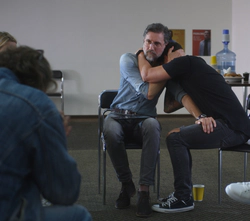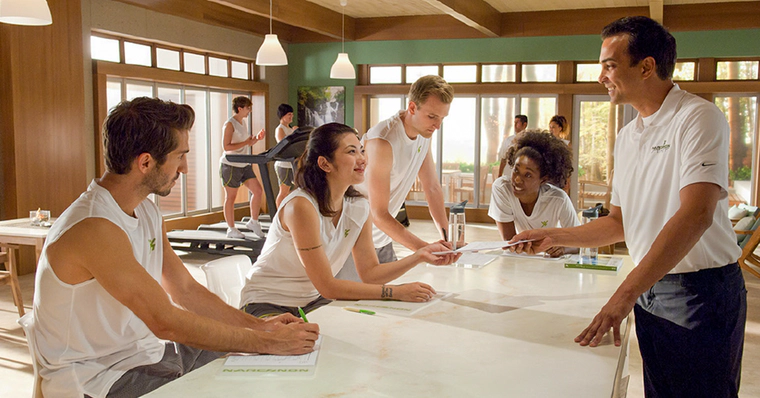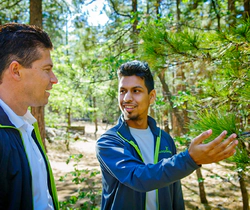Alternative Drug Rehab

An alternative drug rehab is one that does not fall strictly within traditional types of settings and styles of treatment. The fact of being an alternative program does not mean that one is less effective. In fact and in life, there are many pathways to recovery. Traditional drug rehab is one pathway. Alternative drug rehab may take several other forms.
What Does Traditional Drug Rehab Look Like?
Traditional or conventional drug rehabs can be short-term or long-term. Short-term programs usually last between 28 and 31 days. Long-term programs vary. Some are a few months long but a therapeutic community long-term program can require a stay of a year or two.

Many of these programs follow or incorporate the Twelve Step formula originally devised as part of Alcoholics Anonymous. Group therapy meetings and individual counseling sessions are also common.
Traditional drug rehab may also be residential or outpatient. The term inpatient is used flexibly to describe different types of residential rehab programs, but most often an inpatient program takes place in a medical or hospital facility.
Traditional drug rehabs may utilize medication such as Suboxone (a combination of buprenorphine and naloxone) or methadone as part of their treatment for opioid-addicted persons. Or they may recommend other psychotropic medications or drugs used for medication-assisted treatment of alcoholism.
Alternative Drug Rehab Follows a Different Pattern
Alternative drug rehabs take many different forms. Some may be accredited by one of the national agencies that examine the operations and standards of drug rehabs and provide a stamp of approval. Others may not be accredited, for example, a small community or faith-based recovery program, but may still offer the support some individuals need to achieve recovery.

The design of an alternative drug rehab may focus on being outdoors in the wilderness or on equine (horse) interactions. Some may incorporate music, meditation, acupuncture or yoga. It is up to an individual or their family to check out alternative drug rehabs thoroughly to ensure that each step of the rehab program aligns with their values. It is also important to ask about the intended endpoint of the particular program being considered to ensure that it is a goal that the individual in rehab wants to achieve.
A History of Success
A valid alternative drug rehab should have a history of success. If an alternative drug rehab is only a couple of years old, it may be experimental in nature. It would not be possible to examine the program’s long-term success after completion of that program.
A program with a long history of success, with many testimonials from those who achieved their goals of productive sobriety, can provide a good look into the validity of that approach. In fact, it takes time to refine a bright idea into a drug rehab protocol that can offer success to the majority of those who complete that program. The longevity of the program is a likely key to its validity.
Providing an Alternative to Conventional Drug Rehab Since 1966

The Narconon program was first developed in 1966. For decades, Narconon centers across America and around the world have offered alternative drug rehab to thousands of individuals who wanted to leave addiction far, far behind.
The Start of Sobriety: Detox
Before entering a drug rehab some people will need the support of a Medical Detox, a stay in a medical facility where medications can be prescribed as needed. Because of the severe withdrawal symptoms of some drugs, it is necessary to protect their health with medications and close monitoring. For those who don’t need medical detox, the withdrawal period should provide a lot of nutrition and staff support until this initial phase is over. At a Narconon drug rehab, withdrawal is also accompanied by close supervision and plenty of one-on-one work with the staff to help a person focus on the present. With this assistance and support, the withdrawal process can then be associated with hope and a positive outlook for the future.
When the person is free from drugs circulating in their bodies, they can begin the rehab program. When a person chooses the Narconon alternative drug rehab program, that initial withdrawal is followed by the Narconon New Life Detoxification Program. This is a deeper detox that enables each person to flush out the residual toxins stored in their bodies from years or even decades of alcohol or drug consumption. Time spent sweating in a low-heat sauna accompanied by exercise and nutritional supplements that assist detoxification flushes drug and alcohol residues out in their sweat. Those completing this action report a fresh new viewpoint and the end to the Post-Acute Withdrawal Symptoms they were suffering.
Departure from the Past, Return to the Present

Memories of the past can make the present a misery for the person in recovery. There is guilt, trauma, loss, damaged integrity, harm to others—they all drag a person down. Also, at one time, drugs and cravings controlled that person. Now each person needs to learn to exert control over themselves.
Beginning to plan a better future requires letting go of all this harm and guilt and developing that self-control. A well-planned rehab program will have an approach to this life improvement.
The Narconon alternative drug rehab program accomplishes this improvement with a series of exercises that helps each person let go of these memories, a little at a time. When they are complete, those on this program often remark that the present looks more alive and vivid. The future often looks full of more possibilities. This is an essential therapeutic step for a person who wants to build a better, saner future that is under their own control.
Generating New, Stronger Life Skills

Life skills are often left in the dust after years or decades of addiction. One’s personal integrity must be rebuilt. There must be a new understanding and willingness to overcome obstacles. Setbacks and losses must not drive a person back into drug abuse but must be dealt with successfully. Before a person returns to their former lives, they will need to receive training in the life skills needed to maintain sobriety. Then they must become experienced in using these life skills to cement their utilization in their day-to-day operations. As each person utilizes these new skills, they should be able to shape a new, sober future.
In the Narconon program, three training courses offer life skills in personal integrity, improving the conditions in their life, understanding who to trust in life, knowing how to overcome setbacks, problems and much more.
Using the skills they gain in this section of the rehab program, these students of a successful, sober life apply the skills to improve their decisions and approach to life, right on the spot. They follow this with further application to develop a plan to establish a better, more successful life after completing this alternative drug rehab.
For many people, an alternative drug rehab offers a fresh, new approach to recovering the ability to construct a positive, productive life. The wide variety of alternative rehabs that are available means that there are hundreds of choices when an individual or family is searching for a solution to addiction.
